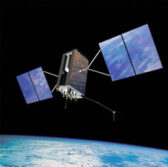 Australia’s geoscience research agency has teamed up with Lockheed Martin, Inmarsat and GMV to demonstrate how signals from multiple constellations of Global Navigation Satellite Systems can help build up positioning, navigation and timing for various applications.
Australia’s geoscience research agency has teamed up with Lockheed Martin, Inmarsat and GMV to demonstrate how signals from multiple constellations of Global Navigation Satellite Systems can help build up positioning, navigation and timing for various applications.
Geoscience Australia and the three companies will demonstrate over a two-year period a new Satellite-Based Augmentation System testbed for applications in nine industrial sectors that include aviation, maritime, agriculture, construction, rail, utilities, road, spatial and mining, Lockheed said Monday.
The second-generation SBAS testbed will use signals from the Galileo satellite constellation and Global Positioning System as well as from L1 and L5 GPSÂ and E1 and E5a Galileo frequencies.
Vince Di Pietro, CEO of Lockheed’s Australia and New Zealand arm, said the partnership seeks to increase GNSS integrity in order to meet safety-of-life navigation requirements.
Geoscience Australia will operate reference stations that will work to monitor GNSS signals once the SBAS testbed is installed, while Lockheed will provide the uplink antenna and systems integration support.
Inmarsat will provide the SBAS navigation payload hosted onboard the company’s 4F1 geostationary satellite.
Spain-based GMV will install a master station for the testbed that will work to gather reference station data, compute integrity bounds and corrections and produce augmentation messages.
The Australia and New Zealand Cooperative Research Centre for Spatial Information will provide coordination support on the projects that seek to test the second-generation SBAS testbed.
Rod Drury, director of international strategy and business development at Lockheed’s space systems business, said the firm’s uplink antenna in New South Wales will transmit the augmentation messages to Inmarsat satellite’s SBAS payload and then rebroadcast the messages to end users within seconds.




